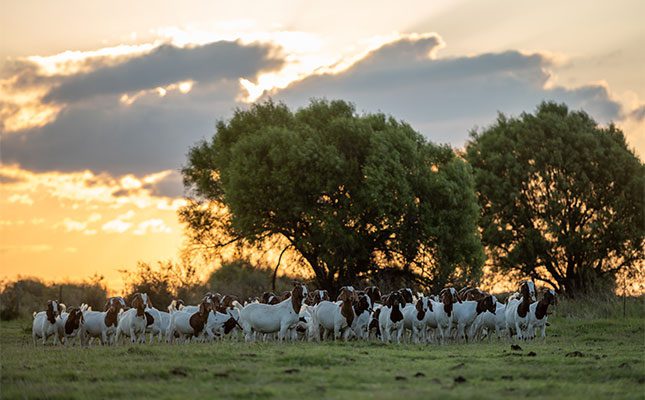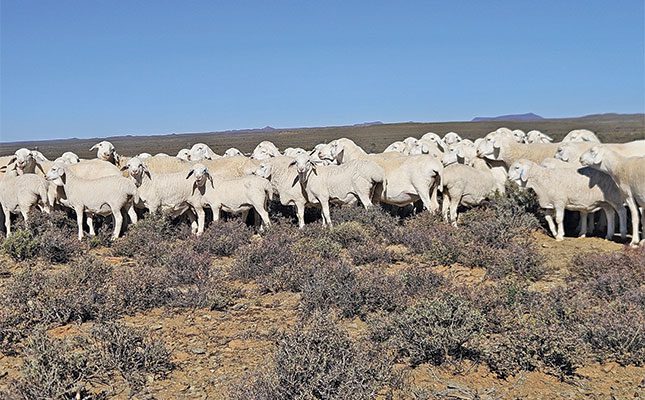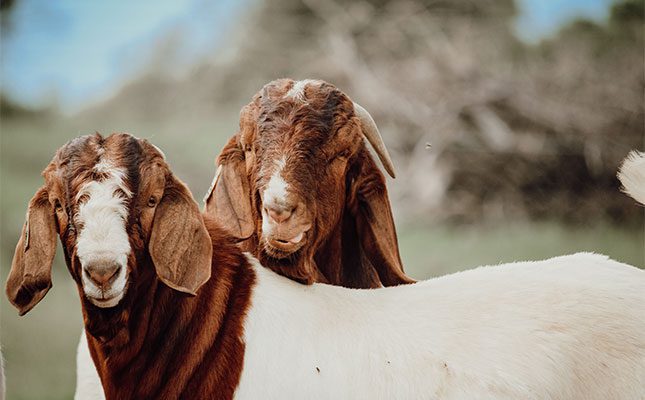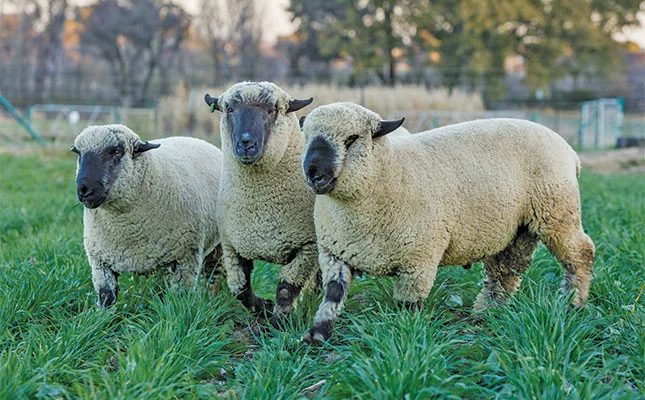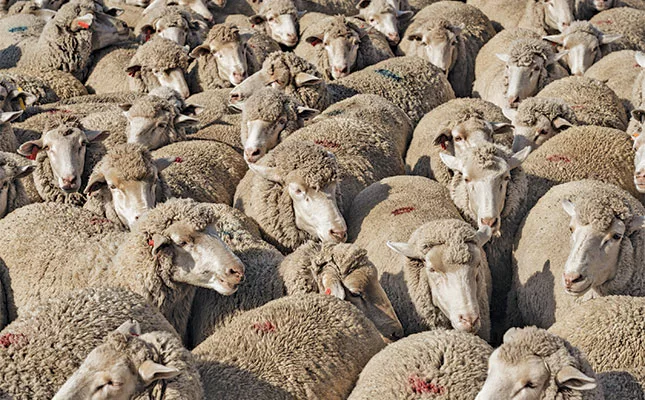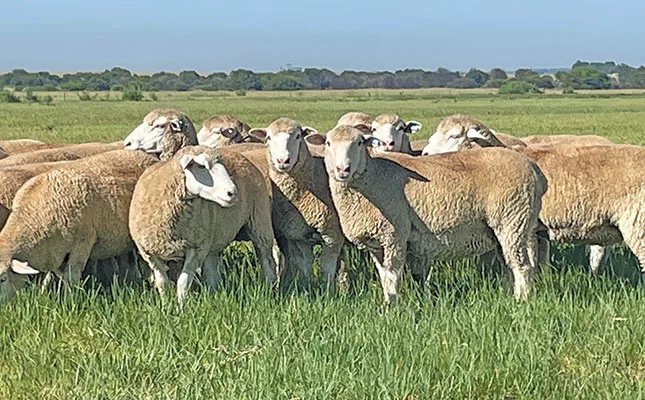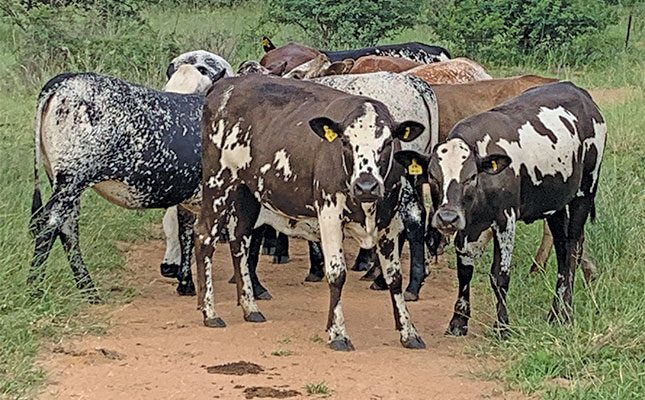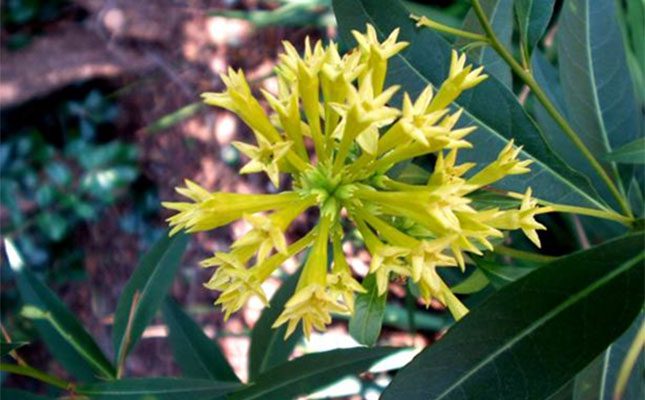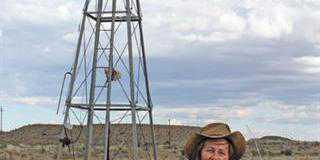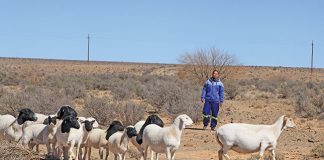
Photo: Octavia Avesca Spandiel
When it comes to sheep breeds in South Africa, few stand out quite like the Dorper.
Known for its adaptability, fertility, and exceptional meat quality, the Dorper has become one of the most successful and recognisable breeds both locally and internationally.
Speaking to Farmer’s Weekly, Shane Scorgie, a Dorper farmer based in Middelburg in the Eastern Cape, explains what makes this breed so remarkable and why it continues to capture the interest of farmers worldwide.
A South African success story
The Dorper was developed in the 1930s at the Grootfontein Agricultural College in the Eastern Cape.
“They used a Dorset Horn ram and crossed it with a Blackhead Persian ewe. The main goal was to produce a sheep with a high-quality carcass that could thrive in South African conditions. What they achieved was a breed that not only produces excellent meat but is also highly fertile and adaptable,” says Scorgie.
One of the Dorper’s standout traits is its ability to lamb frequently. Unlike some breeds that have defined breeding seasons, Dorpers can lamb three times in two years.
“They are good mothers, fertile, and their lambs grow fast. At a young age, the lambs reach slaughter weight quickly, thanks to their strong feed conversion efficiency,” he adds.
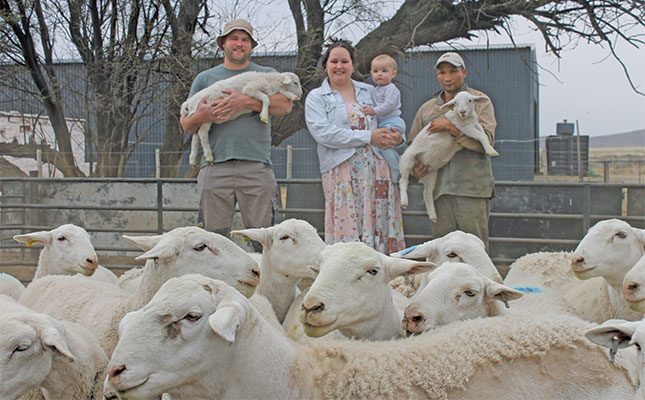
Adaptability across environments
A key reason for the Dorper’s global success lies in its adaptability.
“The Dorper performs well in dry regions, wet areas, and even in the coldest conditions. I’ve seen them thrive in Namibia where resources are scarce, and they do just as well overseas, even in snowy environments. Farmers there send back very good feedback about how the breed performs,” says Scorgie.
This adaptability makes the Dorper a versatile option for farmers in South Africa, where conditions can vary drastically between regions.
Scorgie further mentions that the Dorper excels under extensive farming systems where sheep graze natural veld.
“Your cheapest feed is veld, and the Dorper makes the best use of it. They are veld sheep, and you can finish them off directly from grazing,” he says.
Growth performance
Dorpers are also well suited to semi-extensive systems. Scorgie says that farmers in areas like Steynsburg in the Eastern Cape achieve excellent results combining veld grazing with some land-based feeding.
“Their lambs reach market weight between five to six months,” he adds.Growth rates for Dorper lambs are impressive. “On veld, they can grow between 180g/day and 280g/day, while in more controlled conditions with supplementation, growth can reach 250g/day to 320g/day,” says Scorgie.
Genetics and management play a crucial role in achieving these results.
Meat quality and consumer appeal
Ultimately, it is the Dorper’s meat quality that sets it apart in the marketplace.
“The fat distribution, lean meat, and marbling make a big difference. If you compare a rib chop from a Dorper lamb to that of other breeds, you’ll find more muscle and meat on the Dorper chop,” he says.
This is a key reason why the breed has become increasingly popular with consumers, both locally and abroad. Farmers also value the Dorper’s ability to deliver carcasses that meet export standards.
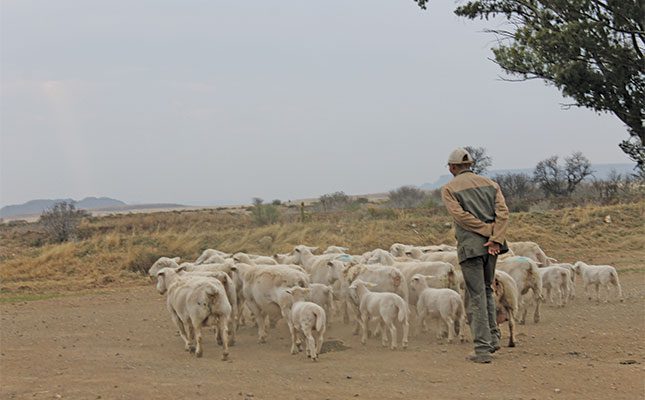
Breeding and management practices
Behind the Dorper’s performance is careful management. Scorgie mentions the importance of nutrition, genetics, and low-stress handling.
“Managing your flock well on the veld, providing the right supplements, and ensuring animals are in good condition during the breeding season are all essential,” he says.
Breeding strategies often focus on selecting for growth, muscling, and carcass quality, ensuring that each generation continues to perform at a high standard.
Genetic strength
When it comes to breeding, Scorgie says the delicate balance between linebreeding and avoiding inbreeding has to be adhered to.
“Most stud breeders focus on linebreeding to keep their bloodlines pure, but there’s a fine line between inbreeding and linebreeding.
“The goal is to maintain your own type of animal by breeding within your flock, while occasionally introducing new bloodlines to prevent inbreeding,” he says.
This strategy, he says, allows farmers to preserve the consistency of their flock while enhancing performance.
“You might bring in five ewes from another breeder so that 75% of your line remains pure while 25% introduces fresh genetics. That way, you keep the balance right,” he says.
For Scorgie, genetics remain at the heart of successful Dorper farming. “Genetics play a huge role, and many farmers underestimate this. A poor-quality ram can set back your breeding programme by five years.
“That’s why it’s so important to select rams that have proven themselves, not just those that carry a high price tag. A good ram with strong performance in feed conversion and growth will move your flock forward,” he says.
Key breeding priorities
In Dorper breeding programmes, fertility comes first. “You need a ewe that produces enough milk to grow her lambs, coupled with strong mothering instincts. Growth rate from birth to weaning is equally important, as this determines profitability.
“Fast, efficient growth is where the money is, but carcass quality, especially fat distribution and muscling, cannot be overlooked,” he adds.
Scorgie further mentions nutrition as a cornerstone of both fertility and growth performance in Dorpers. “An overweight ewe is not as efficient. An ewe with a body condition score of 2,5 to 3 is far better. If your ewe enters breeding in the right condition and you provide a flush feed, conception rates rise, and the chances of twins increase,” he says.
For lambs, the most critical growth phase is between 10 and 90 days of age.
“That’s when they gain the most weight per day. If you provide the best quality creep feed during that period, you’ll see excellent returns. That’s where your feed conversion is at its best, and that’s where the money is made,” says Scorgie.
Common health concerns
No breed is without its challenges, and Dorpers are no exception. According to Scorgie, two common issues are footrot and abscesses.
“Footrot usually happens when water dams up around drinking troughs. The best prevention is to design systems that allow water to drain away, keeping the area dry,” he says.
Abscesses, on the other hand, often occur when thorns or sticks penetrate the skin, leading to infection.
“The key here is hygiene, keeping facilities clean and treating wounds promptly,” Scorgie adds.
Challenges and opportunities
As with much of South Africa’s livestock sector, Dorper farmers face both difficulties and prospects for growth. Scorgie says that access to quality genetics and managing input costs remain major challenges.
“Feed costs and the availability of grazing can make or break profitability. But with the Dorper’s adaptability and efficiency, farmers are in a strong position to make it work,” he says.
On the opportunity side, Scorgie sees a growing demand for Dorper meat both locally and abroad.
“Consumers want quality lamb with good fat distribution and muscling, and the Dorper delivers exactly that. There is room to expand into export markets, especially with the breed’s reputation for consistent carcass quality,” he says.
Factors influencing profitability
Like any livestock enterprise, Dorper farming comes with its own set of challenges. Scorgie identifies feed costs, labour, climate change, predation, and general farm maintenance as the main factors influencing profitability.
“The maintenance cost of Dorpers is very low compared to other breeds. Labour is manageable, and the breed itself is hardy, which helps keep overheads down,” he says.
He explains his practical approach to health management: “When my lambs are about a month old, I give them Lentex and Multi-Vaxx P+. By the time they reach 90 days, they are healthy and strong.
“Parasite management is another key factor, especially in high-rainfall areas where internal parasites can be a problem. Overdosing can create resistance, so it’s better to manage parasites according to seasonal risk and let the animals develop resilience naturally,” he says.
Role of dorpers in the future
Looking ahead, Scorgie sees a bright future for the breed both locally and internationally.
“The Dorper is growing in importance for meat production and feed efficiency. It is increasingly used in crossbreeding programmes to improve carcass quality,” he says.
He also adds the export potential: “Dorper genetics can’t as yet be exported to markets like Botswana and Namibia due to foot-and-mouth disease, but if we start exporting, it could open doors internationally. The breed performs well overseas, so there is huge potential for global expansion.”
Despite global opportunities, Scorgie says South Africa remains a hotspot for Dorper development.
“Here, there is strong interest in the breed, and new breeders are keen to invest in the genetics and management needed to take Dorpers to the next level.
“It’s exciting to see this passion among young farmers. It ensures the breed’s legacy will continue for generations,” he says.
For more information email Shane Scorgie at [email protected].

